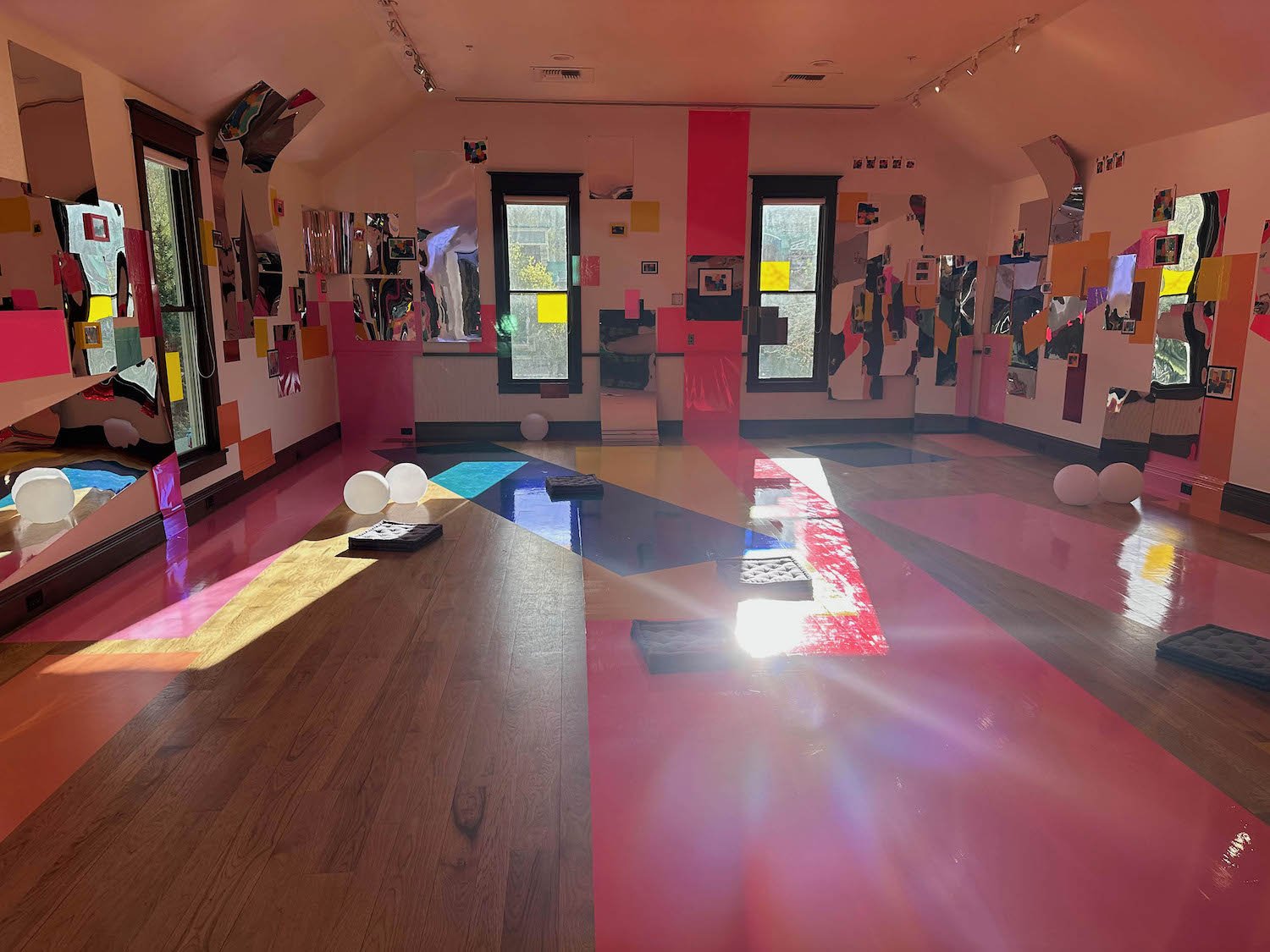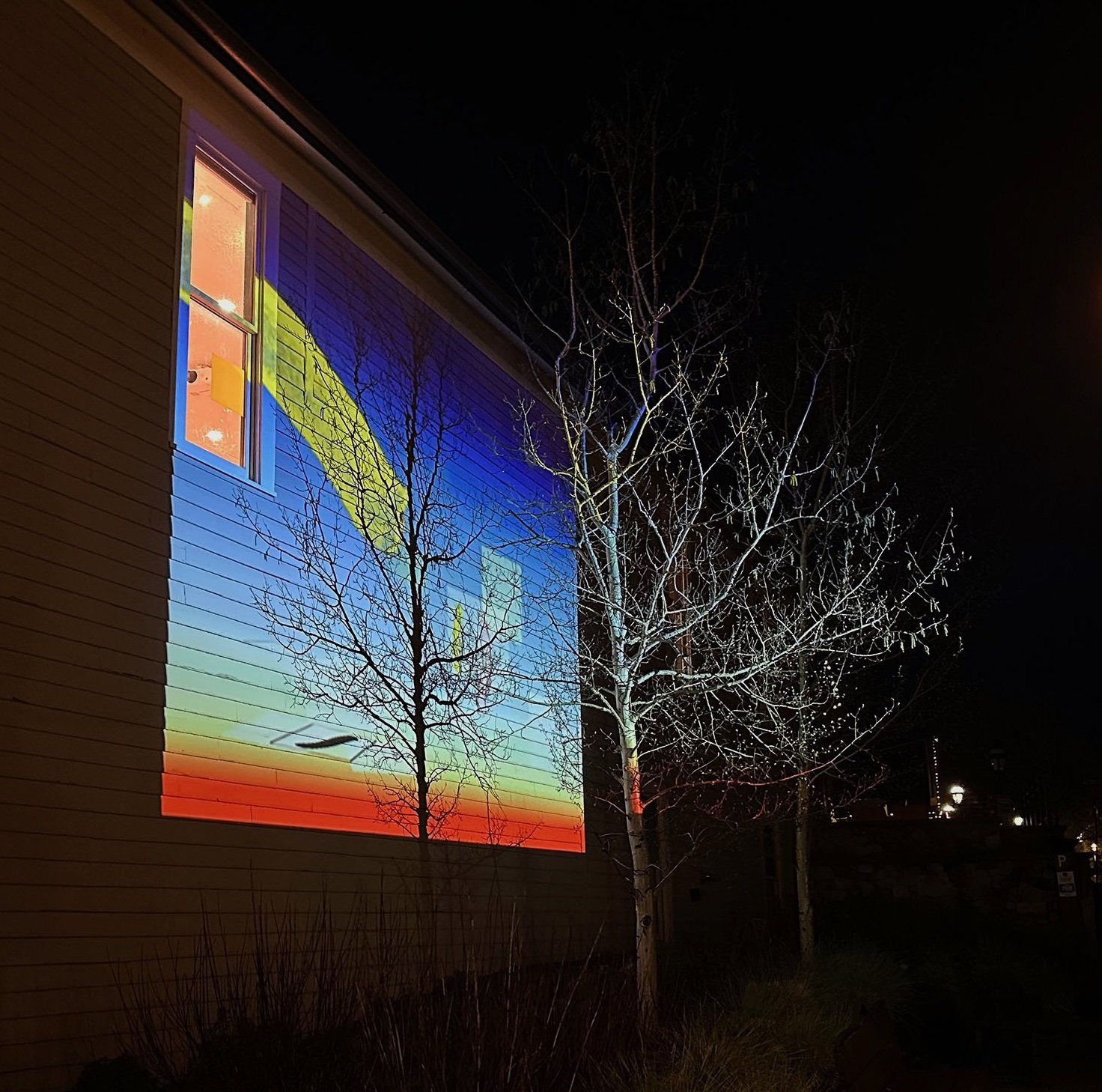ground level
Second Floor
outdoor projection
Participating from Multiple Angles
“Barriers to Entry is a collaborative work that challenges the myth of the solo artist as someone who operates in isolated independence. In it, artist Sharon Louden emphasizes the interdependence of everyone involved in the creation process. As visitors glimpse themselves reflected in the material, they become part of the sculpture. The twisting aluminum sheets create an optical illusion that distorts image and direction. As the sheets bend and crisscross each other, they fragment the space and turn it upside down, encouraging shifts in perspective. Viewers help animate the installation through their own movements, since no two viewing angles are alike.
Included in the exhibition are the names of every person who worked on its construction. The names appear both in the storefront signage and as each individual’s signature, etched into strips of aluminum that are visible in the reflection of the shelf above the doorway.”
Inclusive Acts
“The oil-on-paper paintings in this gallery mirror the overlapping of vinyl and aluminum throughout the exhibition. They are each a different assortment of colorful, irregular squares and rectangles that layer with varying degrees of transparency. Louden magnifies, rather than disguises, her brushstrokes in the paintings, building up the overlapping shapes to create depth. The small sizes of the works on paper contrast with the scale of the sculptural work, yet their plentitude nonetheless contributes to an overall aesthetic of abundance. The aluminum and metallic vinyl also cast shadows and reflect highlights that give texture to the surfaces. Warmer colors of vinyl in this room complement the cooler tones downstairs.
Rather than limit one’s field of vision, Barriers to Entry creates an infinite number of focal points with which viewers can engage, making room for as many perspectives as possible in an inclusive artistic act. Here, cushions once again encourage a restful viewing at ground level. The paintings are installed at different heights, rarely at eye-level, and the picture frames fluctuate in size, shape, color, and usage. In these ways, the installation does not follow certain gallery standards of display. Such variation begs the question of whose eye-level and framing preferences gallery standards serve in the first place.
At night, two digital works by Louden, Seen and Heard and The Bridge, project on the south facing wall of Old Masonic Hall. Animations of Louden’s mark making, combined with expressions of gratitude, connect the installation’s exterior and interior and convert the physical barrier of a building wall into a meditation on collaborative art-making.”
Site-specificity
“Until 2005, this building functioned as a masonic lodge for a chapter of Freemasons. Masonic lodges were private spaces open only to men. Similarly, art museums and institutions have historically posed barriers to entry (whether physical, financial, or psychological) to both artists and visitors who do not represent the dominant culture. Louden defies the historic exclusivity of this space by transforming its structure and topography, and through the presence and playful use of materials not traditionally associated with fine art. Tinsel pours out from behind corners and suspended aluminum, vinyl extends across the floor, and beach volleyballs accent the gallery entrance. Moreover, features such as the tufted cushions invite a relaxed and comfortable viewing that is literally down to earth.”
PRESS:
Katherine Steichen Rosing, “Sharon Louden's installation in Breckenridge, Colorado, challenges perceptions of space, ourselves,” Studio Blog, July 30, 2023


